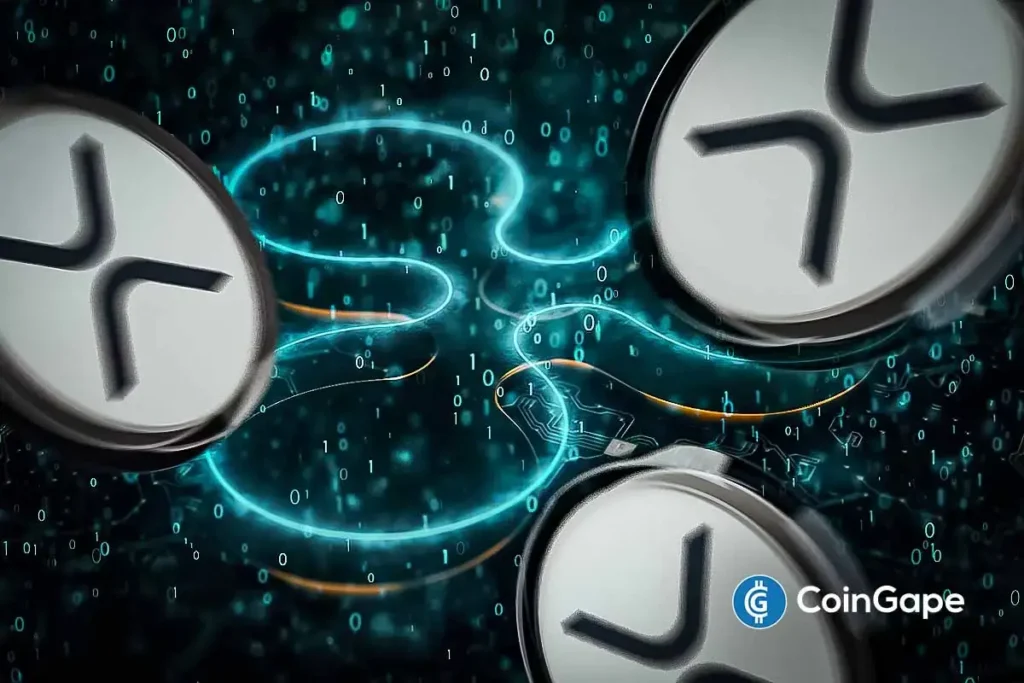Ripple’s XRP Escrow Update: Unlocking and Relocking Trends Explained
Ripple’s recent movements involving its XRP token have sparked significant interest and speculation within the cryptocurrency community. The company unlocked a staggering 500 million XRP tokens but immediately re-locked 400 million of them. This unusual pattern raises questions about Ripple’s strategic intentions and market implications. In this article, we will explore the details of Ripple’s escrow release, the reasons behind relocking a substantial amount, and the broader context of XRP movements.
Understanding Ripple’s Escrow Mechanics
Ripple has been consistently releasing 1 billion XRP tokens from escrow each month since late 2017. This practice is designed to ensure a steady supply of XRP in circulation while maintaining market stability. The most recent release included 500 million XRP, valued at approximately $1.08 billion, which was executed in two transactions of 300 million and 200 million XRP. The tokens are likely intended for various applications, including on-demand liquidity (ODL) operations and strategic partnerships.
However, the immediate relocking of 400 million XRP tokens, worth around $869 million, has raised eyebrows. This seemingly contradictory move is reminiscent of other recent trends in Ripple’s management of its tokens, particularly the departure from traditional patterns seen earlier this year. Understanding the context of these transactions is essential for grasping their potential implications for the XRP market.
Ripple’s Unconventional Patterns
Earlier this year, Ripple began deviating from its standard monthly escrow unlocks by performing internal relocations of XRP. Instead of releasing the full 1 billion XRP, the company established new escrows from its reserves, suggesting a shift in strategy. Observations made in March indicated that Ripple was rebalancing its holdings, perhaps in anticipation of future market movements or partnerships.
In parallel, Ripple partner SBI Holdings transferred $703 million worth of XRP to an internal wallet. This relocation seems interconnected with the overall narrative of creating new escrow arrangements and suggests a strategic reallocation of assets. Such movements indicate that Ripple is proactively managing its liquidity and token availability in a fast-evolving market.
The Market Response: Price Fluctuations
Despite the recent release and relocking of XRP tokens, the market reaction has been somewhat muted. While XRP experienced a slight surge post-release, it still faced a 24-hour decline, hitting a low of around $2.1538 before recovering to approximately $2.19. This fluctuation is reflective of broader market trends and the complex phenomenon of investor sentiment amidst news surrounding token movements.
The immediate impact of Ripple’s escrow activities on market pricing underlines the volatility inherent in the cryptocurrency realm. Price reactions can be influenced by multitude factors, including investor speculation, ongoing legal proceedings involving Ripple, and competition with other cryptocurrencies.
Implications for Investors and XRP Holders
For XRP holders and potential investors, this complex dynamic around escrow management raises critical questions. The relocking of tokens could suggest that Ripple is maintaining a strong control over the token supply, aiming to prevent excessive market flooding. This strategy might stabilize prices in the long term, but it also poses a risk if investors perceive the volatility as detrimental to their holdings.
Investors need to stay informed about Ripple’s ongoing activities and market conditions. With the company actively adjusting its liquidity strategy, understanding these patterns will be crucial for making informed investment decisions. As Ripple navigates these challenges, it may present both risks and opportunities for those holding or considering XRP.
The Future of Ripple and XRP
Looking ahead, the future for Ripple and its XRP token remains uncertain yet promising. As the company continues to innovate in liquidity solutions and partnerships, the impact of its escrow management strategies will likely shape the trajectory of XRP in the coming months. The evolving regulatory landscape surrounding cryptocurrencies, particularly in the United States, adds another layer of uncertainty, influencing how investors navigate this market.
Ripple’s approach to liquidity and asset management could serve as a blueprint for other entities in the cryptocurrency space. The ongoing discourse around token releases and re-locks not only defines Ripple’s market strategy but also contributes to broader discussions about transparency and control in the digital asset ecosystem.
Conclusion
In summary, Ripple’s recent unlocking and relocking of XRP tokens showcase a strategic shift in how the company manages its assets. The apparent contradictions in token supply may reflect broader objectives focused on market stability and liquidity management. As investors continue to monitor these trends, the implications for the XRP price and Ripple’s future remain a topic of keen interest. This evolving narrative will undoubtedly play a significant role in shaping the outlook for Ripple and XRP amidst an ever-changing cryptocurrency landscape.
By understanding these key dynamics, stakeholders can better position themselves within the intricate folds of the crypto market. Stay informed and explore these developments further to navigate the future of digital assets effectively.


